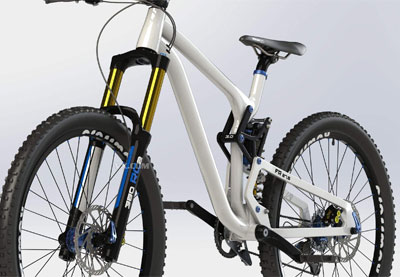
- Afrikaans
- Albanian
- Amharic
- Arabic
- Armenian
- Azerbaijani
- Basque
- Belarusian
- Bengali
- Bosnian
- Bulgarian
- Catalan
- Cebuano
- Corsican
- Croatian
- Czech
- Danish
- Dutch
- English
- Esperanto
- Estonian
- Finnish
- French
- Frisian
- Galician
- Georgian
- German
- Greek
- Gujarati
- Haitian Creole
- hausa
- hawaiian
- Hebrew
- Hindi
- Miao
- Hungarian
- Icelandic
- igbo
- Indonesian
- irish
- Italian
- Japanese
- Javanese
- Kannada
- kazakh
- Khmer
- Rwandese
- Korean
- Kurdish
- Kyrgyz
- Lao
- Latin
- Latvian
- Lithuanian
- Luxembourgish
- Macedonian
- Malgashi
- Malay
- Malayalam
- Maltese
- Maori
- Marathi
- Mongolian
- Myanmar
- Nepali
- Norwegian
- Norwegian
- Occitan
- Pashto
- Persian
- Polish
- Portuguese
- Punjabi
- Romanian
- Russian
- Samoan
- Scottish Gaelic
- Serbian
- Sesotho
- Shona
- Sindhi
- Sinhala
- Slovak
- Slovenian
- Somali
- Spanish
- Sundanese
- Swahili
- Swedish
- Tagalog
- Tajik
- Tamil
- Tatar
- Telugu
- Thai
- Turkish
- Turkmen
- Ukrainian
- Urdu
- Uighur
- Uzbek
- Vietnamese
- Welsh
- Bantu
- Yiddish
- Yoruba
- Zulu
Sep . 08, 2024 17:48 Back to list
lightweight ebike
The Rise of Lightweight Ebikes A Sustainable Urban Mobility Solution
In recent years, the surge in urban population has presented a significant challenge for city planners and residents alike. Traffic congestion, air pollution, and a general push towards sustainable living have led to a search for innovative transportation solutions. Among these solutions, lightweight electric bikes (ebikes) have emerged as a frontrunner, combining convenience, efficiency, and eco-friendliness.
Lightweight ebikes typically weigh between 30 to 50 pounds, making them easier to handle compared to traditional bicycles and heavier electric models. This reduced weight plays a crucial role in enhancing mobility. Commuters can easily maneuver through urban traffic, navigate tight spaces, and ascend hills without breaking a sweat. With battery technology continually improving, these ebikes now offer sufficient range—often between 20 to 60 miles on a single charge—making them ideal for daily commutes or leisurely weekend rides.
One of the primary advantages of lightweight ebikes is their contribution to a greener environment. Unlike cars, which emit harmful pollutants, ebikes produce zero tailpipe emissions. This is particularly crucial in densely populated urban areas where air quality has become a growing concern. By encouraging more individuals to choose ebikes over motor vehicles, cities can potentially reduce traffic congestion and lower overall carbon emissions. Additionally, many lightweight ebikes are designed with eco-friendly materials, further enhancing their sustainability credentials.
lightweight ebike

Cost efficiency is another notable benefit of lightweight ebikes. While the initial investment might seem steep for some models, the long-term savings on fuel, maintenance, and parking often outweigh the costs. With rising fuel prices and an increasing focus on sustainable commuting, even a small investment in an ebike can yield significant financial perks. Moreover, many local governments offer incentives such as tax credits or rebates for electric bike purchases, making them even more accessible.
Safety is an important consideration in urban transportation, and lightweight ebikes are making strides in this area too. Many models come equipped with features such as integrated lights, reflective decals, and powerful braking systems that enhance visibility and control, ensuring a safer ride. Additionally, larger bike lanes and bike-sharing programs in cities promote a culture of cycling, further increasing the safety and acceptance of ebikes on the road.
As consumer preferences shift, more manufacturers are recognizing the demand for lightweight ebikes, leading to a diverse range of styles and designs. From sleek commuter models to robust cargo bikes, there’s an option for everyone, catering to various needs and lifestyles. This variety encourages more people to consider cycling as a viable mode of transportation.
In conclusion, lightweight ebikes are revolutionizing urban mobility by providing an efficient, eco-friendly, and cost-effective alternative to traditional transportation methods. As cities continue to evolve and the emphasis on sustainability grows, the adoption of lightweight ebikes will likely rise. They represent not only a practical solution to modern-day commuting challenges but also a significant step towards creating a cleaner, healthier environment for generations to come. With the right support from communities and governments alike, lightweight ebikes can pave the way for a smarter, more sustainable urban future.
-
The Ultimate Kids' Four-Wheeler Experience
NewsJul.09,2025
-
The Ultimate Guide to Mountain Bikes: Gear Up for Your Ride
NewsJul.09,2025
-
The New Age of Cycling: Electric Bikes for Every Rider
NewsJul.09,2025
-
The Best Kids Bicycles: Ride in Style and Safety
NewsJul.09,2025
-
The Best 3-Wheel Scooters for Kids: Fun, Safety, and Adventure
NewsJul.09,2025
-
Revolutionize Your Ride: Affordable Electric Bikes
NewsJul.09,2025
-
Finding the Perfect Mountain Bike for Every Rider
NewsJul.09,2025



